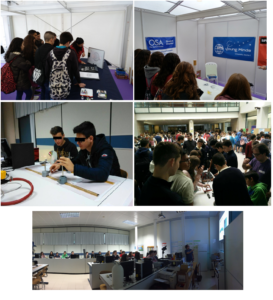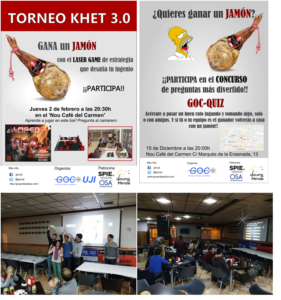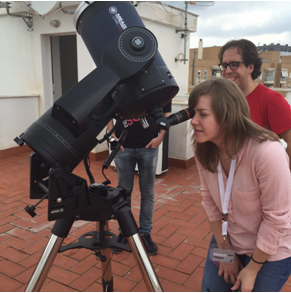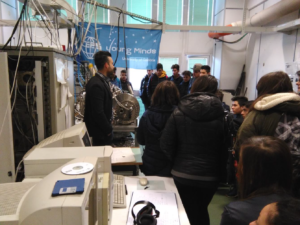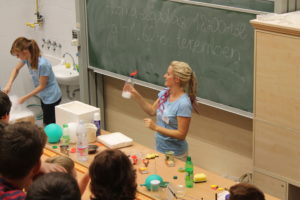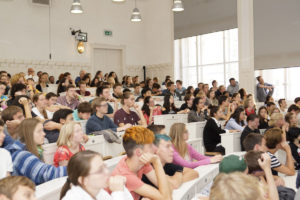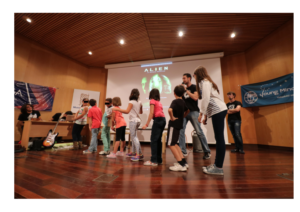The Erlangen YM Section continued their program to visit local schools and tell them about how fundamental science works. With this, they not only showed how research is performed, but gave a peak into the actual life of a researcher. Starting from developing an idea in the shared kitchen of the group, drawing first experimental sketches on the whiteboard and building a first setup – these are the roots of experimental research that get everything else started. Continuing on the topic, the pupils were taught that every experiment and every theory always undergoes some sort of revision process that usually starts with analyzing some measurement results, goes on with a discussion and commonly ends with an adjustment of the experiment or theory. Finally, research needs communication. Without that, nobody would know today about the great achievements of science and nobody could base their work on the millions of papers already published. The pupils (11th grade) were very intrigued by the honest and insightful picture that was given to them and asked many questions both during and after the lecture.
The presentation was accompanied by an experiment that the section brought along to show that whatever was told in the presentation has some realism to it. The pupils were able to make the connection and continue with their questions in a hands-on manner, while being fascinated that single molecules can be resolved by a portable tabletop experiment.
The pupils were not the only ones who learned something. For the Erlangen YM section, it proves to be a valuable lesson to step out of the research lab for a day and do something completely different. Explaining your research during an outreach event grounds you and lets you reconnect to the value of your findings. Through this event, one member of the section was even able to re-visit his old school and delve into past time memories.

